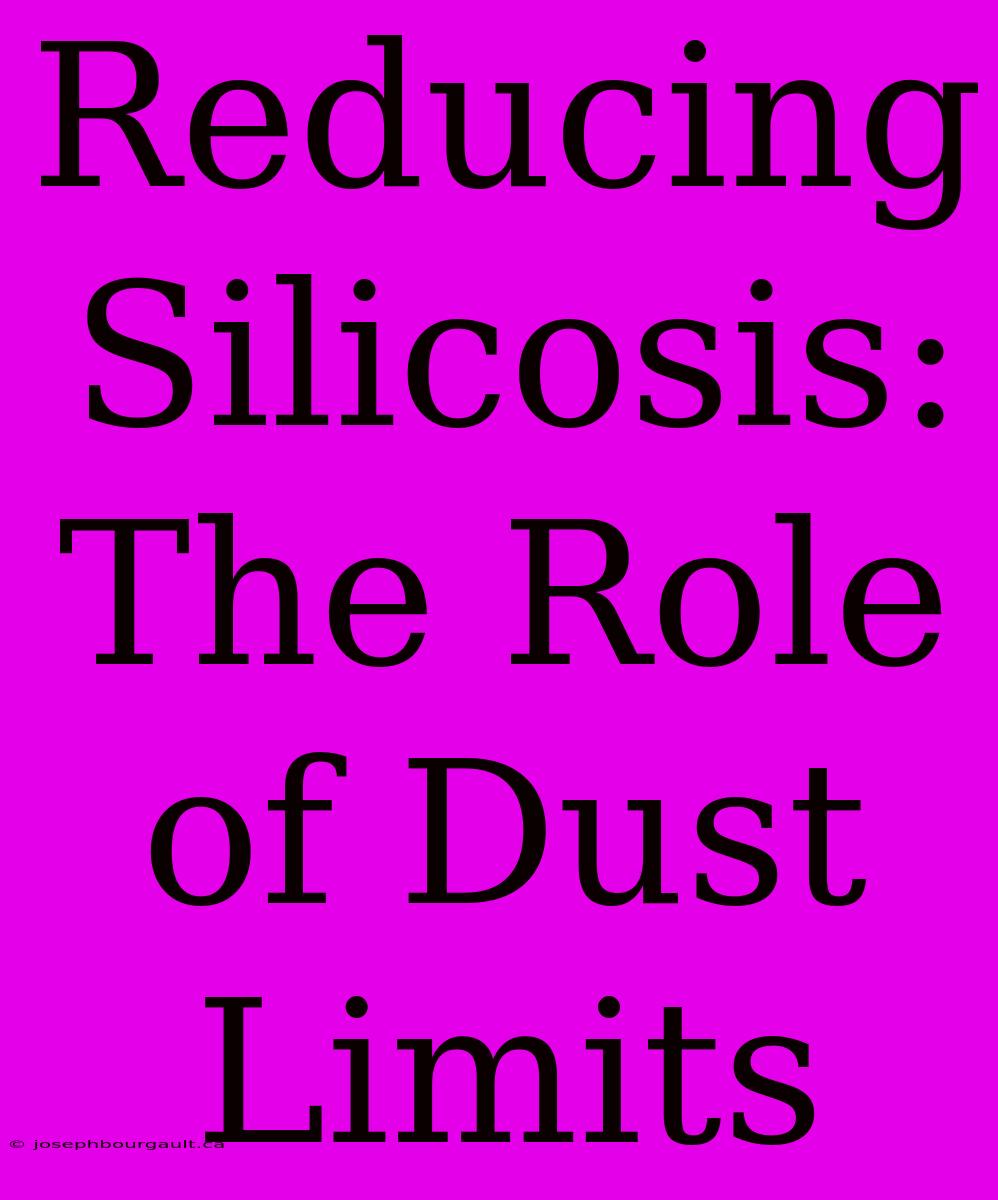Reducing Silicosis: The Role of Dust Limits
Silicosis, a debilitating lung disease caused by inhaling silica dust, poses a significant threat to workers in various industries. From mining and construction to quarrying and sandblasting, these professions expose individuals to harmful levels of silica dust, leading to irreversible lung damage and, in severe cases, death.
Understanding Silica Dust and Silicosis
Silica is a naturally occurring mineral found in sand, rock, and soil. When silica is broken down into fine particles, it becomes silica dust, which can be easily inhaled and become lodged deep within the lungs. The body's natural defense mechanisms are unable to break down silica particles, leading to the formation of scar tissue and inflammation, ultimately hindering lung function.
The Importance of Dust Limits
Dust limits are crucial for minimizing worker exposure to silica dust and reducing the risk of silicosis. These limits, set by regulatory bodies like OSHA (Occupational Safety and Health Administration), establish maximum permissible concentrations of silica dust in the workplace air.
Here's how dust limits play a pivotal role in reducing silicosis:
-
Establishing Safe Exposure Levels: Dust limits define the threshold for safe exposure to silica dust, ensuring that workers are not exposed to excessive concentrations that could lead to silicosis.
-
Driving Workplace Safety Measures: Dust limits encourage employers to implement comprehensive safety measures to control silica dust levels, such as:
-
Engineering Controls: Implementing dust suppression systems, ventilation systems, and enclosed work areas.
-
Administrative Controls: Limiting the duration of exposure, rotating workers, and providing adequate breaks.
-
Personal Protective Equipment (PPE): Ensuring the use of respirators, dust masks, and protective clothing.
-
-
Monitoring and Enforcement: Dust limits provide a basis for monitoring silica dust levels in the workplace, ensuring compliance and allowing for timely intervention if levels exceed the safe limits.
The Impact of Dust Limits on Silicosis Prevalence
The implementation of dust limits has proven to be highly effective in reducing the incidence of silicosis. Studies have shown that stricter dust limits are associated with lower rates of silicosis diagnosis.
For example:
- OSHA's Silica Standard: The 2016 OSHA silica standard, which lowered the permissible exposure limit (PEL) for respirable crystalline silica, is expected to significantly reduce silicosis cases in the future.
The Future of Dust Limits and Silicosis Prevention
The ongoing efforts to reduce silicosis are focused on further strengthening dust limits and improving workplace safety practices. This includes:
-
Continuous Monitoring and Research: Ongoing research into silica dust exposure and its effects will lead to further improvements in dust limits and workplace safety practices.
-
Public Awareness and Education: Raising awareness about silicosis and the importance of workplace safety practices among workers, employers, and the general public.
By implementing and enforcing strict dust limits and promoting workplace safety practices, we can significantly reduce the incidence of silicosis and safeguard the health of workers in industries at risk.

